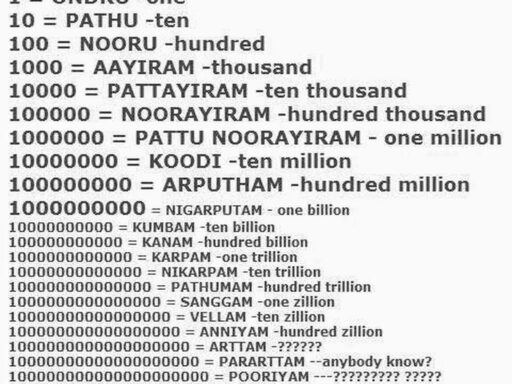Yes, there have been several proposed additions to the English alphabet throughout history and in modern times. Historically, English included letters like thorn (þ) and ash (æ) that represented specific sounds but were eventually removed or replaced as English orthography evolved. The ampersand (&) was once considered the 27th letter of the alphabet but fell out of official use during the Victorian era. Meanwhile, letters such as J and U were later additions that came into standardized use around the Middle Ages, reflecting changes in pronunciation and writing needs.
Thorn (þ) was a letter used in Old English to represent the “th” sound. Over time, it was replaced by the digraph “th,” which combines the letters T and H. This change simplified English spelling but led to the loss of distinct letter forms for certain sounds.
Ash (æ) originated from Latin and Old English alphabets to represent a vowel sound somewhat like the “a” in “cat.” Although it survives in some specialized spellings and linguistic transcriptions today, it is no longer part of the standard English alphabet. Unlike thorn, ash is not just a ligature of A and E but a distinct character once widely used.
The ampersand (&) originated as a ligature of the Latin word “et,” meaning “and.” Historically, it was taught as the 27th letter of the alphabet. At the end of the alphabet recitation, schoolchildren would say “…X, Y, Z, and, per se, &.” This phrase eventually turned into the modern word “ampersand.” The character is still widely used as a shorthand symbol for “and,” but it no longer holds letter status.
During the Middle Ages, the English alphabet saw additions such as the letters J and U. These letters were not originally distinct from I and V, respectively. For example, the letter “V” functioned as both a vowel and a consonant until “U” was introduced to clarify vowel sounds. Similarly, “J” emerged to differentiate certain consonantal sounds from “I.” These changes shaped the modern 26-letter alphabet.
In modern times, proposals to add new letters continue, most notably involving sounds not adequately represented by current letters. One example is the schwa (ə), an unstressed vowel sound in English. Some proponents have petitioned to add the schwa as an official letter in the English alphabet to better represent pronunciation. However, these proposals have yet to gain widespread acceptance.
Spelling reform advocates have also suggested more radical changes. Some propose completely replacing the existing English alphabet with alternative phonetic alphabets to address inconsistencies and complexities in English spelling. The Shavian alphabet, created with support from playwright George Bernard Shaw, is one such system that aimed to simplify English writing by assigning a single letter to each sound. Despite periodic interest, these overhaul proposals face strong resistance due to the cultural and practical costs of adopting a new written system.
Noah Webster, an influential American lexicographer, proposed various spelling reforms during the early 19th century. While he did not propose adding new letters per se, Webster sought to simplify spelling by altering spellings to reflect American English pronunciation more closely. His reforms contributed to the divergence between British and American English spelling patterns.
English spelling reform discussions sometimes center on reducing redundant letters rather than adding new ones. For example, some suggest eliminating letter overlaps, such as multiple letters representing similar sounds: the letter “C” overlaps with “K” and “S” sounds. Reformers argue that English could function with fewer letters, potentially dropping letters like “C” in favor of “K” and “S.” Unlike adding letters, these ideas focus on streamlining the alphabet.
| Historical Letter | Status | Function |
|---|---|---|
| Thorn (þ) | Removed | Represented “th” sound |
| Ash (æ) | Removed | Vowel sound similar to “a” in “cat” |
| Ampersand (&) | Removed | Represented “and” |
| J and U | Added | Differentiated sounds from I and V |
| Schwa (ə) | Proposed | Represents unstressed vowel sound |
Making any change to the English alphabet is challenging. The written language is deeply embedded in education, literature, technology, and communication. Proposals to add letters must overcome inertia, institutional acceptance, and practical considerations. This explains why letters like ampersand were removed rather than new letters added, and why radical reform such as the Shavian alphabet remains niche.
Overall, proposed additions to the English alphabet have occurred but have been limited and often unsuccessful. Reintroducing historical letters or adding new ones to capture specific sounds remains a topic among linguists and reformers. Yet, the modern 26-letter system, finalized in Victorian times, continues as the global standard for English writing.
- Historical letters like thorn (þ) and ash (æ) once existed but were removed or replaced.
- The ampersand was an official letter but removed by the Victorian era.
- Letters J and U were added in the Middle Ages to clarify sounds.
- Modern proposals include adding the schwa (ə) and phonetic alphabets like Shavian.
- Spelling reform often focuses on reducing redundant letters rather than adding new ones.
Have letters like thorn and ash ever been part of the English alphabet?
Yes, thorn (þ) and ash (æ) were once used in English. Thorn was replaced by the letter combination “th.” Ash is a separate letter but is not related to the “AE” ligature seen in some fancy spellings today.
Was the ampersand ever officially a letter in the English alphabet?
Yes. The ampersand (&), originally called “and,” was the 27th letter. Children recited it at the alphabet’s end until it was removed in the Victorian era.
Have there been proposals to add new letters to the English alphabet in modern times?
Yes. For example, some have petitioned to add the schwa symbol. Others, like Noah Webster, suggested spelling reforms that included alphabet changes.
Has anyone seriously tried to replace the English alphabet entirely?
There have been proposals to replace it completely, such as the Shavian alphabet, named after George Bernard Shaw. These aim to simplify spelling but remain unpopular.
When were letters like J and U added to the English alphabet?
J and U were added around the Middle Ages. They are considered newer additions compared to many ancient letters that fell out of use over time.




